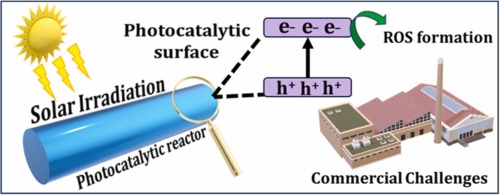
Extremely lightweight and buoyant films are presenting a potentially groundbreaking approach to purify polluted water, rendering it safe for consumption by harnessing light to eliminate harmful microorganisms. These films feature a photocatalyst that generates persistent bactericidal radicals, effective even in low light settings, such as those provided by a smartphone flashlight.
The worldwide deficiency in access to safe drinking water leads to around 2 million fatalities each year, including one child under five every two minutes. This emergency mainly impacts 81% of the vulnerable population living in low- and middle-income nations where inadequate infrastructure frequently lacks centralized water treatment systems. In these at-risk communities, alternative point-of-use disinfection methods such as UV irradiation, chlorination, filtration, and solar disinfection each present specific challenges related to energy consumption, carcinogen release, ineffective disinfection, and impracticality.
While photocatalytic systems hold promise, they are constrained by their need for high-intensity illumination, an intensity exceeding even the brightest natural light situations. Moreover, traditional systems typically employ short-lived reactive oxygen species for bactericidal function, posing risks of corrosion and contamination.
In response to these challenges, researchers at Sun Yat-sen University in China have created a pioneering photocatalyst by combining a carbazole with an electron-donating phenylalkoxy chain and anthraquinone, resulting in long-lasting oxygen-centered organic radicals (OCORs) when exposed to light. Integrated into a fibrous film composed of polystyrene and polyacrylonitrile, this catalyst has shown remarkable effectiveness: under low light intensity (10mW/cm²), it eliminated 99% of Escherichia coli bacteria within 20 minutes, achieving total eradication within 30 minutes. A heavily contaminated 10-liter sample containing up to 20,000 bacterial colonies per milliliter was made safe in 40 minutes, meeting WHO standards. It also successfully eradicated Staphylococcus aureus in 25 minutes.
Further investigation confirmed that OCORs damage bacterial cell membranes, leading to the release of their internal contents and subsequent bacterial death, aided additionally by hydrogen peroxide and singlet oxygen.
Weighing only 4mg/cm², the film is not only lightweight and buoyant but can also be molded to fit any water container. It proved effective under light as dim as that of a smartphone flashlight (5mW/cm²).
Discussing this innovative method, materials scientist Guihua Yu from the University of Texas at Austin underscores the promise of such long-lived radicals but calls for further analysis regarding cost, long-term efficacy, and disposal methods. Meanwhile, Rice University’s Michael Wong finds the findings encouraging and praises the non-metallic nature of the film’s photocatalyst, stressing its practical utility and potential.